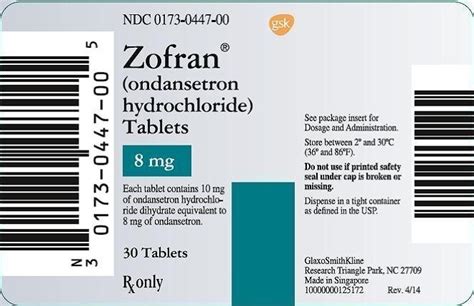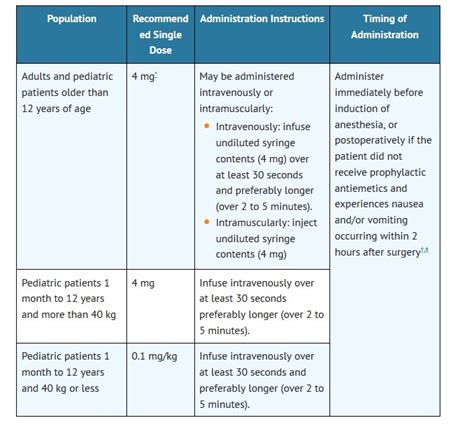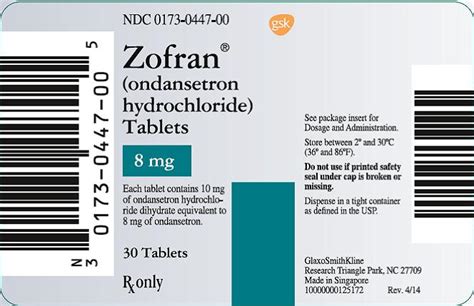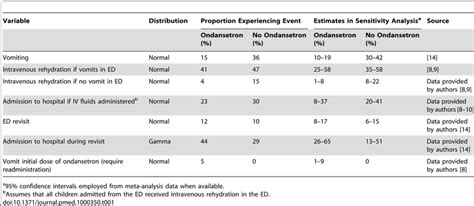Intro
Zofran, also known as ondansetron, is a medication that has been widely used for several decades to prevent nausea and vomiting caused by various medical conditions and treatments. The importance of this medication cannot be overstated, as it has significantly improved the quality of life for countless individuals undergoing chemotherapy, radiation therapy, and surgery. In this article, we will delve into the uses of Zofran, its working mechanism, benefits, and potential side effects, as well as provide practical examples and statistical data to support its effectiveness.
Zofran is a selective serotonin 5-HT3 receptor antagonist, which means it works by blocking the action of serotonin, a natural substance that can cause nausea and vomiting. This medication is available in various forms, including tablets, orally disintegrating tablets, and injectable solutions. Its versatility and efficacy have made it a staple in the treatment of nausea and vomiting associated with cancer chemotherapy, radiation therapy, and surgery. Moreover, Zofran has also been used to treat gastroenteritis, a condition characterized by inflammation of the stomach and intestines, often caused by viral or bacterial infections.
The use of Zofran has revolutionized the management of nausea and vomiting, allowing patients to undergo necessary medical treatments without the debilitating side effects of these symptoms. For instance, chemotherapy-induced nausea and vomiting can be so severe that it leads to dehydration, electrolyte imbalances, and even treatment discontinuation. Zofran has been shown to reduce the incidence of nausea and vomiting by up to 70% in patients receiving chemotherapy, thereby improving their overall well-being and treatment outcomes. Furthermore, the medication has also been used to treat morning sickness during pregnancy, although its use in this context is more limited due to potential risks to the fetus.
How Zofran Works
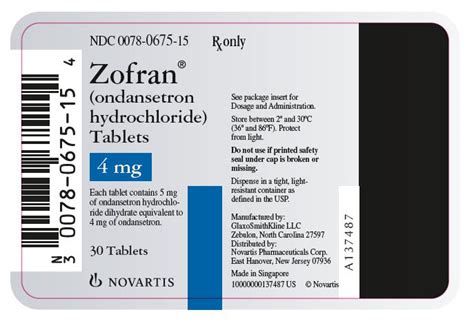
Benefits of Zofran
The benefits of Zofran are numerous and well-documented. Some of the most significant advantages of this medication include: * Effective prevention of nausea and vomiting: Zofran has been shown to reduce the incidence of nausea and vomiting by up to 70% in patients receiving chemotherapy. * Improved quality of life: By preventing nausea and vomiting, Zofran allows patients to maintain their nutrition, hydration, and overall well-being, even during intense medical treatments. * Reduced risk of complications: Nausea and vomiting can lead to dehydration, electrolyte imbalances, and other complications. Zofran helps mitigate these risks, ensuring patients receive the necessary medical treatments without interruption. * Versatility: Zofran is available in various forms, making it easy to administer and convenient for patients to take.Uses of Zofran
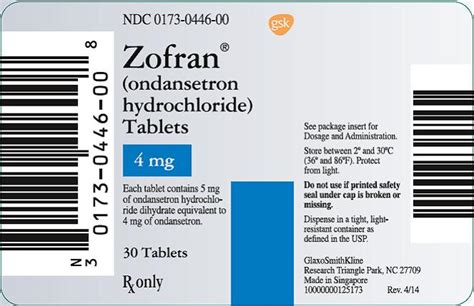
Potential Side Effects
While Zofran is generally well-tolerated, it can cause some side effects, including: * Headache: Mild to moderate headaches are common, affecting up to 20% of patients. * Dizziness: Zofran can cause dizziness or lightheadedness, particularly when standing up quickly. * Constipation: The medication can slow down bowel movements, leading to constipation in some patients. * Diarrhea: Conversely, Zofran can also cause diarrhea in some individuals. * Injection site reactions: When administered via injection, Zofran can cause redness, swelling, or pain at the injection site.Practical Examples and Statistical Data
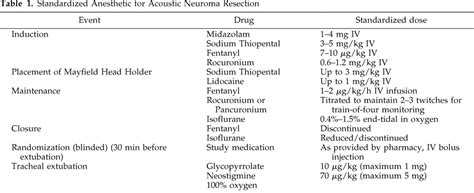
Steps to Take Zofran
To take Zofran effectively, follow these steps: * Take the medication exactly as prescribed by your doctor. * Swallow the tablet whole with a glass of water. * Do not crush or chew the tablet. * If taking the orally disintegrating tablet, place it on your tongue and allow it to dissolve. * If receiving the injectable solution, follow the instructions provided by your healthcare provider.Conclusion and Next Steps

We invite you to share your thoughts and experiences with Zofran in the comments section below. Have you or a loved one used Zofran to manage nausea and vomiting? What were your experiences, and how did the medication impact your treatment outcomes? Your feedback and insights can help others better understand the benefits and limitations of Zofran, ultimately improving patient care and outcomes.
What is Zofran used for?
+Zofran is used to prevent nausea and vomiting caused by cancer chemotherapy, radiation therapy, surgery, gastroenteritis, and morning sickness during pregnancy.
How does Zofran work?
+Zofran works by binding to serotonin 5-HT3 receptors in the vagus nerve terminals and the chemoreceptor trigger zone in the brain, thereby blocking the transmission of nausea and vomiting signals.
What are the potential side effects of Zofran?
+Potential side effects of Zofran include headache, dizziness, constipation, diarrhea, and injection site reactions.
Can Zofran be used during pregnancy?
+Zofran may be prescribed to treat severe morning sickness during pregnancy, although its use in this context is more limited due to potential risks to the fetus.
How effective is Zofran in preventing nausea and vomiting?
+Zofran has been shown to reduce the incidence of nausea and vomiting by up to 70% in patients receiving chemotherapy, significantly improving their quality of life and treatment outcomes.
